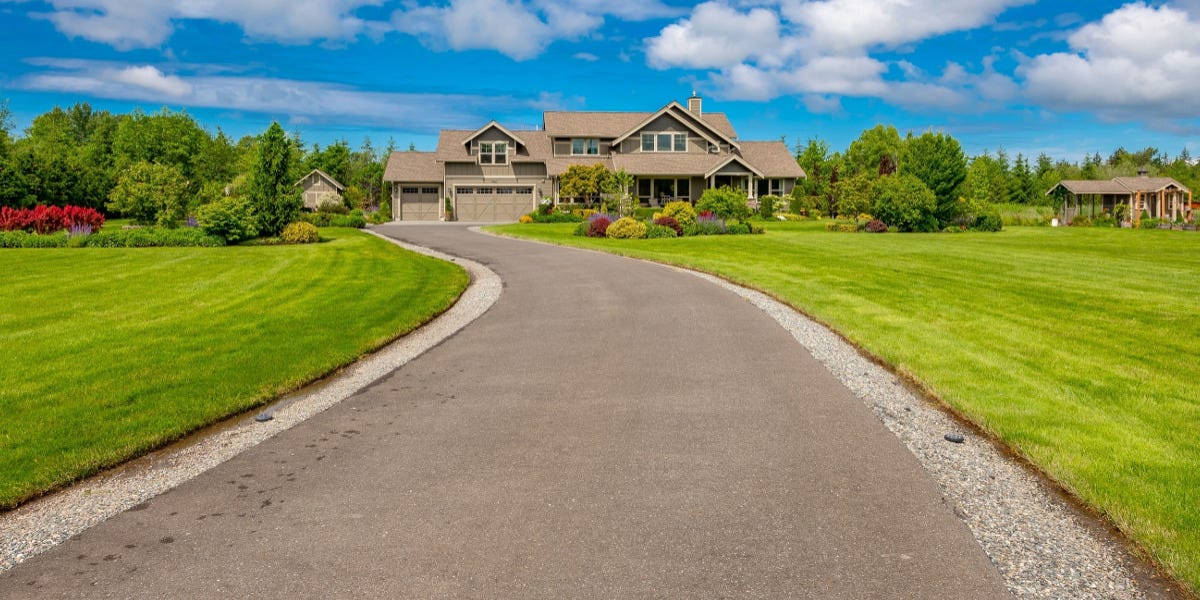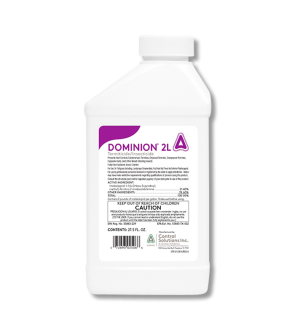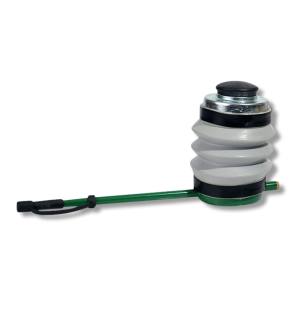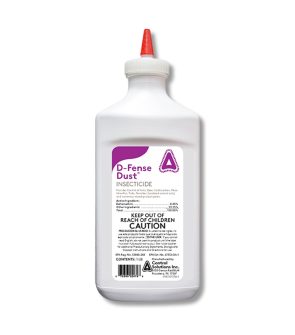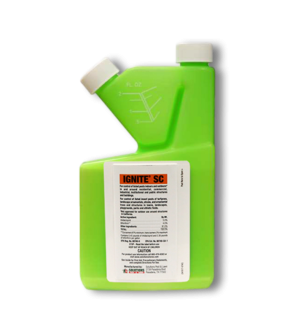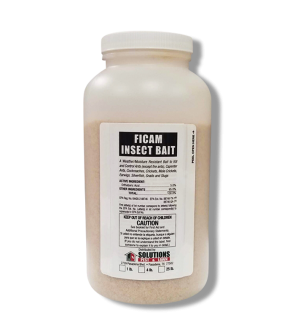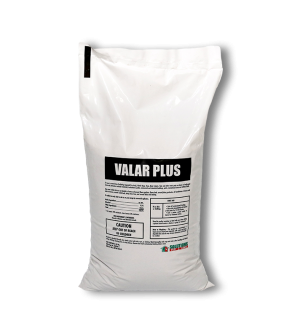Insects in Driveway/Walkway
Most Effective Products
Common Insects in Driveways and Walkways
Insect pests are common in yards and within certain spaces of homes, but one area that is often overlooked for pests is your drivewalk or walkway. Common insect pests in residential driveways and walkways are billbugs, concrete mites, June bugs, pavement ants, and springtails.
By far the most common problem with these pests is that they become an annoying nuisance. Some can bite, pinch, or damage plants to the point of being aesthetically unpleasing or dead. Even after they are dead, the problem can continue with other pests being attracted to these sites to feed upon them.
Proper identification and appropriate application techniques are key elements to controlling and preventing damages from common driveway and walkway pests. Learn all of this by following alone with our professional diy guide.
If you are not seeing a pest listed here, then contact our customer service team by phone or email for professional tips and product recommendations.
Billbugs
Billbugs and their white grubs are serious pests of turfgrass, but from April to July the adults are frequently noticed traveling across driveways or walkways. They will walk across these areas in search of a good place to lay their eggs.
The adults will feed on the top layer of turf while the grubs feed below ground and cause damage to the roots or the crown area of the plant. Infestations may also attract predators like skunks or racoons that dig and damage lawns in search of these pests.
Identification
 Billbug adults are ¼ to 1/16 inches long and dark, black, or brown with a pitted or spotted texture on their wings.
Billbug adults are ¼ to 1/16 inches long and dark, black, or brown with a pitted or spotted texture on their wings.
They have six legs, segmented antennae, and a broad, elongated snout with chewing jaws at the end.
Larvae are legless, generally white to cream colored, and humped backs. Their head capsules are brown and when fully developed the larvae are a quarter to half an inch in length.
Inspection
 In spring and summer, adult billbugs will travel across driveways and walkways to feed on turf on the other side or lay eggs.
In spring and summer, adult billbugs will travel across driveways and walkways to feed on turf on the other side or lay eggs.
Most billbugs species infest the top surface of warm-seasoned and cool-seasoned turf. Young grubs feed within the crown area of turf or the roots.
Adults overwinter in infested turf or sheltered areas nearby like leaf litter, thatch, or cracks and crevices in your yard's soil, driveway, or walkways.
Treatment
Step 1: Mow

The best long-term approach to removing billbugs is through regular mowing. Turf near driveways is a prime source of the infestation since these pests depend on these sites for breeding and feeding.
Lawns where the turf is maintained to its proper height, which typically is 3 inches, promote better tolerance to grub activity and deter adult activities.
Picking up lawn clippings after mowing also helps to control billbug breeding activities since they use these sites to lay their eggs as well.
Step 2: Spread Granule Insecticide
 Since younger stages of grubs are much more effectively controlled, we recommend using a granule residual insecticide like Valar Plus.
Since younger stages of grubs are much more effectively controlled, we recommend using a granule residual insecticide like Valar Plus.
Valar Plus is a bifenthrin based granule insecticide that lasts up to 3 months in treated turf to prevent billbugs and fight against current infestations. As a granule, it will need to be applied with a push or broadcast spreader.
Determine how much Valar Plus to use by measuring the square footage of the treatment area. To do this, measure the length and width of the treatment area in feet then multiply them together (length X width = square footage).
Apply 1.15 to 2.3 lbs of Valar Plus per 1,000 sq. ft. of lawn.
Broadcast Valar Plus in 2 perpendicular passes to achieve uniform coverage. After application, water the granules in with 0.5 inches of water to activate them.
Step 3: Spray Liquid Insecticide
 The most effective strategy to treat billbug larvae and the adults is with a systemic insecticide.
The most effective strategy to treat billbug larvae and the adults is with a systemic insecticide.
Dominion 2L Insecticide is a non-repellent insecticide and termiticide that works systemically to eliminate grubs and adult billbugs in lawns.
For a wider coverage during application, we recommend spraying Dominion 2L Insecticide with a hose-end sprayer.
To get rid of billbugs, apply 0.46 to 0.6 fl. oz. of Dominion 2L in a gallon of water per 1,000 sq. ft.
Spray the top and bottom of turf and ornamental leaves until wet, but not to the point of runoff. You will also need to cover areas previously treated with Valar Plus.
Concrete Mites
Concrete mites are fast-moving bright red bugs that often go unnoticed unless they grow in large numbers. These pests are not harmful to people or bite, but they can trigger an onset of allergies to certain individuals.
Identification

Concrete mites, also known as sidewalk mites, are red velvet mites that have a short velvet coat the color of bright red. They have a pill-shaped body with long skinny legs enabling them to run very fast.
Inspection
 Concrete mites live in the cracks and crevices of concrete driveways, walkways, and building exteriors.
Concrete mites live in the cracks and crevices of concrete driveways, walkways, and building exteriors.
Treatment
Step 1: Adjust Watering

For this reason, we recommend adjusting watering to no more than an inch or irrigation once per week. It would be best to do so in the early morning so there is enough time for the soil and plant to absorb the moisture.
By doing this you help to control concrete mites and deter them from accidentally entering your home.
Step 2: Spray Residual Insecticide
Since concrete mites are short lived there is not necessarily immediate action you need to take. For a faster concrete mite resolution and to stop all activity together you will need a residual insecticide.
Supreme IT is a bifenthrin based insecticide concentrate made to eliminate over 70 types of pests, including mites from around your homes foundation, lawn, and ornamentals. Once dried, it will continue to repel these pests for up to 90 days after application.
To use Supreme IT, you will need to use a handheld pump sprayer.
To get rid of mites from your lawn and ornamentals, use 0.25 to 0.5 fl. Oz. of Supreme IT per gallon of water per 1,000 sq. ft. A second application may be needed 5 to 7 days after the first to ensure optimal control.
To get rid of mites from around your home, apply 0.33 to 1.0 fl. oz. of product per gallon of water per 1,000 sq. ft. Repeat application if new pest activity is noticed as long as it is not more than once per 7 days.
For lawn and ornamental applications, spray the top and bottom of foliage until wet, but not the point of runoff.
For perimeter applications, spray 3 feet up and 3 feet out on the ground next to the structure. While spraying be sure to also treat around window and door frames, around plumbing penetrations, and cracks, crevices, or other voids on the wall structure.
Keep children and pets out of treatment areas until the spray has dried.
If there is a new wave of pest activity this could be the second generation of pests. If so, we recommend switching to a miticide to kill concrete mites.
June Bugs
One of the most troublesome bugs for a few weeks out of the summer are June bugs. These large beetles are attracted to nighttime light, so they can be a pest to any activities on your porch or around your home like the driveway or walkway.
Although these pests do not bite, they will eat many types of flowers, plants, and crops in your lawn. Both the grubs and adult stages of these species are harmful to the roots and the top layer of foliage.
Identification
Adult June bugs are 0.5 to 1 inch long and reddish brown, orange or green depending on the species. They have 3 legs, 2 sets of wings under their elytra, club-shaped antennae, and a solid color or patterned variation on their shells.
Larvae are c-shaped grubs, up to an inch in length, have cream colored bodies with several orange spots and brown head capsules. On each side of its body they will have 3 pairs of legs.
Inspection

Generally, the adults will live under leaves or in the bark of trees during the day and overwinter in soil. The larvae spend their life in the soil under crops and lawns to feed on its roots.
Treatment
Step 1: Spray Ornamentals with Dominion 2L

By combining both of these techniques you will limit the amount of pests seen on your driveway, walkway, or around your home.
You will need to control June beetle grubs before they begin to destroy your outdoor foliage. This is best done with a systemic insecticide containing imidacloprid like Dominion 2L, which is most effective against this pest.
With a hose end sprayer, spray at a rate of 0.46 to 0.6 fl. oz. of Dominion 2L in 2 gallons of water per 1,000 sq. ft.
For a wider coverage and easier application, we recommend using a hose-end sprayer.
This product can be sprayed as a foliar or soil application to trees, shrubs, evergreens, flowers, foliage plants, groundcovers, or interior plantscapes.
Irrigate after application to incorporate this product into the upper soil layer.
Step 2: Treat Foundation

Apply 1.0 fl. Oz. of Supreme IT in 1 gallon of water per 1,000 sq. ft.
Spray 3 feet up the home's foundation and 3 feet out from the structure on the ground next to it. Maintain an application to shrubs, lawns, eaves, and cracks and crevices as well during application.
Pavement Ants
Pavement ants are not particularly harmful or aggressive, but they can become a major pain to homeowners due to their ability to invade in large numbers and create multiple nesting sites.
Unlike other ant species, pavement ants do not cause structural damage. With that in mind, it doesn't mean these pests belong in your property since there is the potential exposure to stinging activities.
Identification
Pavement ants have dark brown to black colored bodies with paler legs and antennae. They measure about 1/8th of an inch long and have vertical, parallel grooves along the head and thorax.
Inspection
Pavement ants are named because of their preferred nesting site which is in the cracks and crevices of pavement. These ants can also create nests under walkways, driveways, and patios.
Treatment
Step 1: Apply Bait
Removing pavements ants from your property starts with locating and treating the nest. Our recommendation is to use a dust or granule bait that works slowly to give enough time for the entire colony to contact the material.
Ficam Insect Bait is a granular insecticide bait made with 5.0% orthoboric acid that controls many pests, including pavement ants. This product can be used directly from the container or with a handheld spreader.
Apply Ficam Insect Bait as a perimeter treatment around entire driveway and other areas where this insect has been present.
Spread Ficam Insect Bait a rate of 6 oz or 1 - 1/4 per 100 sq. ft. in a band at least 2 feet wide.
Reapply as necessary, but wait until pavement ant activity is down before using other insecticides.
Insecticides used at the same time would repel pavement ants away from bait before they had a chance to ingest it.
Step 2: Apply Residual Insecticide

Treating along the foundation of your home and as a broadcast treatment across your lawn can help to control these pests completely.
A perimeter treatment with Supreme IT will create a chemical barrier for 90 days, effectively stopping pavement ants from entering your home or coming onto your property.
Use 1.0 fl. oz. of Supreme IT in a gallon of water per 1,000 sq. ft. of a home's foundation and lawn.
To mix and apply Supreme IT, you will need to use a handheld pump sprayer.
Spray 3 feet up your homes foundation and 3 feet out on the ground next to it. Also, spray all around door frames, window frames, eaves, soffits, garage doors, plumbing penetrations, and cracks and in walls.
Broadcast applications to lawns will need to be done by spraying the top and bottom of turf blades until wet, but not to the point of runoff.
Lastly, we recommend making crack and crevice treatments in driveways, patios, and porches to further prevent and control pavement ants.
Do not allow people and pets to enter treated areas until the spray has dried.
Step 3: Dust Voids

D-Fense Dust is an insecticide dust that eliminates and repels ants for up to 8 months after application.
Use 0.5 lbs of D-Fense Dust per 1,000 sq. ft. to get rid of ants. Applications should be done with a handheld duster like the Pro Blow Handheld Pesticide Duster.
Make applications to cracks, crevices, and voids around the outside of your foundation around windows, doors, porches, screens, eaves, patios, garages, and other possible entrances.
Springtails
Those large groups of jumping insects that appear on your driveway or walkway are called springtails. These pests love moisture and feed on dead organic material, but when these sources are no longer present they can start to damage desired ornamentals.
Identification
Springtails are tiny pests that measure about 1/16th of an inch long. Their most unique feature is their forked appendage on the underside of their abdomen that helps them to jump called a furca.
They come in a variety of colors from white to gray that helps them to blend into their surroundings.
Inspection

Also, they can be found around areas that have water, fungi, mold, algae, and other decaying plant material like swimming pools, blocks surrounding patios, hot tubs, driveways, walkways, or other concrete surfaces.
Treatment
Step 1: Eliminate Water

Remove standing water sources in your yard by taking away leaf litter, directing rain gutters away from home and driveway, grass clippings, and other waste materials that collect water.
Damp soil in potted plants will need to be replaced with dry soil. Water ornamentals with no more than an inch of irrigation once per week to avoid stagnant water to attract springtails.
Keep ground level surfaces free of algae and moss with an approved herbicide.
Prune overgrown vegetation to stop shadows and potential excessive moisture buildup in soil for a springtails habitat and food source.
Step 2: Use Repellents
One of the most popular methods to get rid of springtails from your property is a residual repellent like Supreme IT.
To create a chemical barrier around your home against springtails apply Supreme IT at a rate of 1.0 fl. oz. per gallon of water per 1,000 sq. ft.
You will need to create a perimeter treatment by spraying 3 feet up the exterior foundation wall and 3 feet out on the ground next to it. Be sure to also spray around window frames, door frames, eaves, soffits, and plumbing penetrations.
Next cover the complete lawn with a broadcast application at the same rate above. Kill off springtails by starting at the back of the property then make their way to the front by spraying the top and bottom of the turf blades until wet.
Key Takeaways
Common Bugs on Concrete Surfaces
- Common insects found swarming or traveling on driveways and walkways are billbugs, concrete mites, June bugs, pavement ants, and springtails.
How Do You Keep Bugs Off Concrete
- First thing you need to do is to maintain the yard with regular raking, pruning foliage, and addressing moisture levels. Keep up with regular applications every 90 days with a residual insecticide like Supreme IT.
Can Insects Eat Through or Damage Concrete
- Insects cannot eat through concrete, but can weaken the support to it or damage adhesive in crevices for other potential issues like weed growth.
